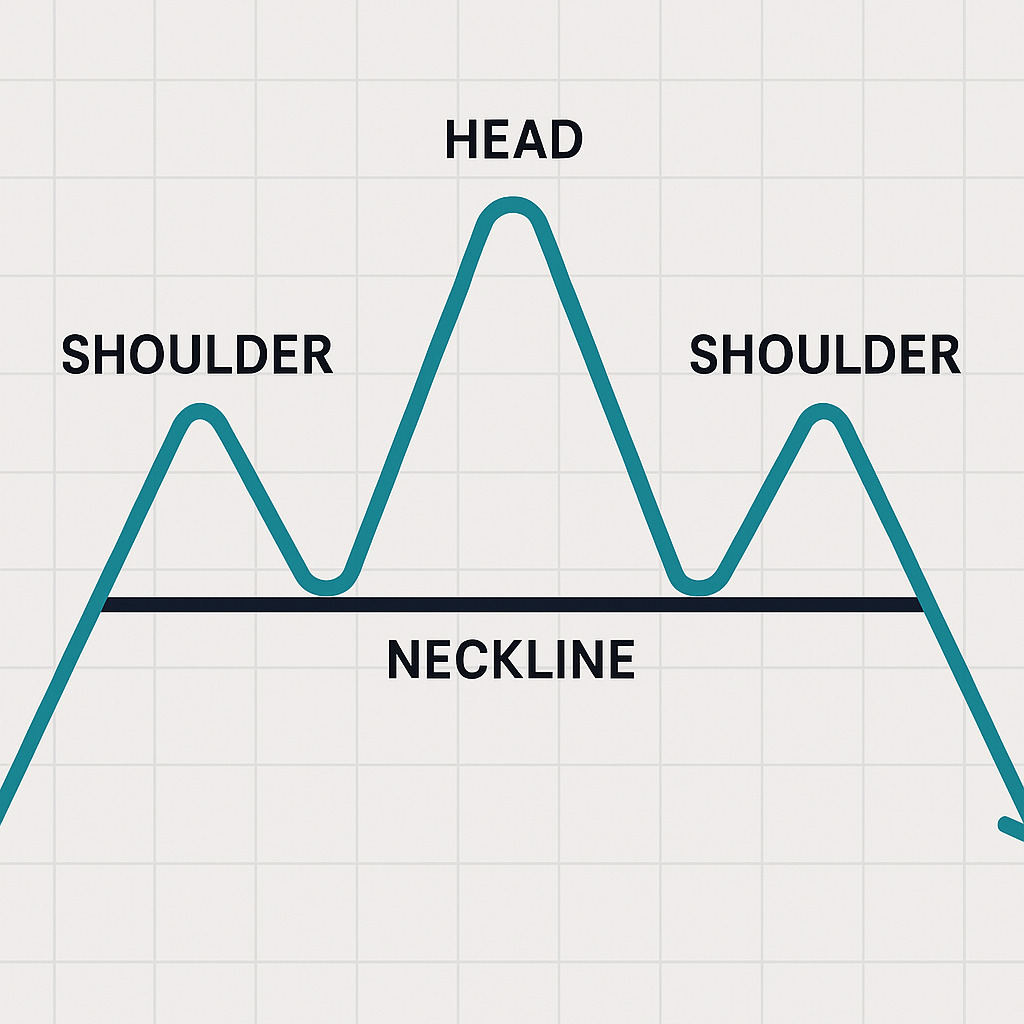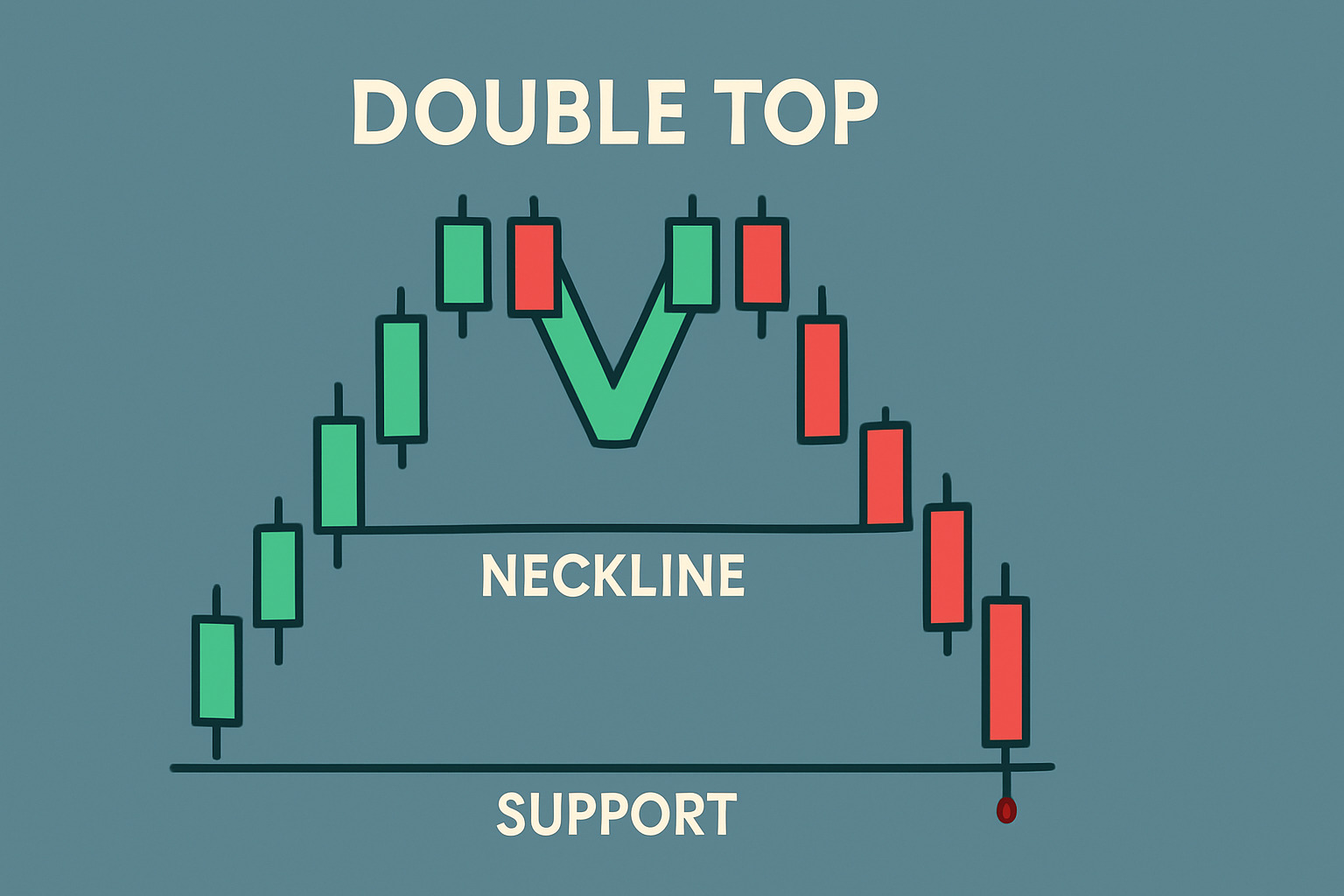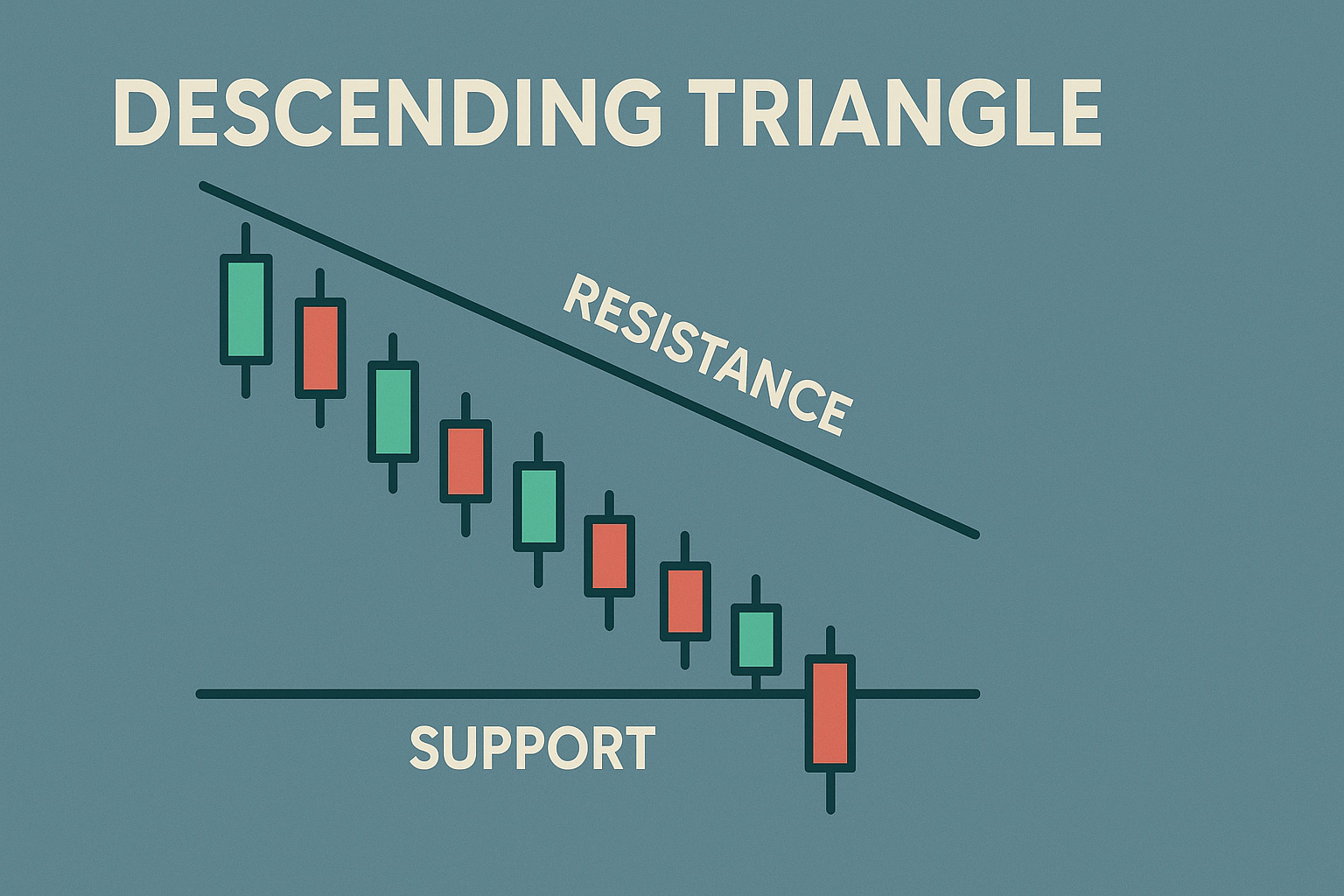Downtrend Trading: Expert Strategies That Actually Work

Downtrend trading is a strategy focused on profiting from falling markets by identifying bearish chart patterns and using tools like short-selling or put options. It requires strong risk management, precise entry/exit timing, and a disciplined mindset to navigate volatility and emotional stress.
Market downturns can last more than two years. General Electric Co. (GE) showed this reality and proved how extended market declines mirror deeper company issues and market conditions. Prices create a consistent pattern of lower peaks and troughs in these bearish phases. This is a big deal as it means that selling pressure is greater than buying interest.
A downtrend pattern takes shape when prices drop below their recent low point, showing supply dominates demand. Your trading success in declining markets relies on your grasp of downtrend charts and solid trading strategies. This piece will give you the expert techniques to spot real downtrends, execute short-selling strategies, handle risks properly, and keep the right trading mindset to profit from bearish markets.
- A true downtrend shows consistent lower highs/lows, high selling volume, and prices staying below key moving averages.
- Effective bearish strategies include short-selling, using put options, and timing entries after pullbacks or breakdowns.
- Risk management is crucial—use the 2% rule, adjust position sizes based on volatility, and place stops above resistance levels.
- Avoid emotional traps like FOMO; focus on conviction built from technical and volume analysis.
- Profiting in bear markets requires patience, discipline, and psychological resilience as much as technical skill.
Understanding Downtrend Patterns in Different Markets
Learning to spot bearish chart formations helps you predict price movements in declining markets. Traders who become skilled at reading these patterns gain valuable insights into market sentiment and discover trading opportunities.
Identifying the three main downtrend chart formations

The head and shoulders pattern is one of the most reliable bearish reversal signals. Three peaks make up this formation, and the middle peak (head) rises higher than the two surrounding peaks (shoulders). The price’s break below the “neckline” support level confirms that the downward trend will likely continue.

Double tops emerge when an asset hits a resistance level twice but can’t break through. This “M” shaped pattern shows that buyers are losing momentum and signals a possible bearish reversal. The pattern completes as the price drops below the support level that forms at the low point between the two highs.

The descending triangle takes shape between a horizontal support line and a falling resistance line. Unlike the first two patterns that signal reversals, this bearish continuation pattern indicates sellers are getting more aggressive and will eventually push the price below the support level.
How downtrends differ across stocks, forex, and cryptocurrencies
Stock market downtrends develop at a slower pace and fundamental factors like poor earnings reports or economic indicators often drive them. These trends can last a long time, and traditional support levels tend to hold better because of institutional involvement.
Economic data and interest rate differences heavily influence forex downtrends. Currency pairs show smoother declines with less volatility than other markets, though major economic announcements can cause sudden spikes.
Crypto downtrends demonstrate more dramatic behavior with steeper declines and extreme volatility. The crypto market often displays exaggerated versions of traditional patterns, and double tops and descending triangles form and complete faster than in conventional markets.
Key indicators confirming a true downtrend vs temporary pullback
True downtrends consistently show:
- Lower highs and lower lows over time
- Price staying below important moving averages (especially the 20-day and 50-day)
- Higher volume during downward price moves
- RSI readings that remain below 50 for long periods
Pullbacks are temporary reversals within an overall downtrend. They usually last 3-5 candles while volume drops 20-30% below the trend average. These pullbacks often respect support levels or Fibonacci retracement zones before the primary downward direction continues.
The difference between these patterns matters because it helps you avoid mistaking brief corrections for trend reversals. Research shows this costly error affects 62% of amateur traders but only 22% of experienced professionals.
Essential Short-Selling Strategies for Declining Markets
Traders need specialized tools and techniques to profit from falling markets. These methods differ from traditional “buy low, sell high” approaches. Short-selling remains one of the quickest ways to capitalize on downward trends.
Simple short-selling mechanics for beginners
Short selling lets you borrow shares from a broker and sell them with plans to buy them back at a lower price. The process gets you cash upfront while creating an obligation to return the borrowed shares later. Your profit comes from the difference between your original selling price and the lower repurchase price when you “cover” your position. You’ll need a margin account that serves as collateral for the borrowed shares to execute this strategy.
Using put options as an alternative to direct shorts
Direct shorting might expose you to unlimited risk if prices rise unexpectedly, but put options give you a more controlled alternative. Put option purchases give you the right (not obligation) to sell an asset at a predetermined strike price. The risk stays limited to the premium you paid for the option. This approach works especially well in volatile markets where stop-loss orders might not execute as planned.
Timing your entry: waiting for confirmation signals
To name just one example, see these three proven approaches for successful short entries:
- Selling into a downtrend after pullbacks
- Entering within a trading range then waiting for breakdown
- Shorting during active declines with increased volume
Countertrend bounces give you optimal entry points because they help identify where other sellers will likely jump back in. Your short positions should be confirmed by technical indicators such as RSI readings below 50 or prices dropping below key moving averages.
Exit strategies to lock in profits during downtrends
Your profitability in downtrend trading depends on proper exit planning. Clear cover prices should be set—levels where you’ll exit your short position. Stop-loss orders placed slightly above resistance levels protect against unexpected reversals. Trailing stop-losses that automatically adjust as prices fall help maximize gains while giving positions room to develop.
Risk Management Techniques Specific to Downward Trends
Trading downward trends needs strict risk management to protect your capital from volatile price swings. Your trading account can quickly drain without proper safeguards during bearish markets, even if you’re experienced.
Position sizing during high-volatility downtrends
Downtrends show higher volatility than uptrends, so you must adjust your position sizing. The basic principle makes sense: the more volatile the market, the smaller your position should be. This flexible approach helps keep your risk exposure steady whatever the market conditions.
You can calculate your trade size using volatility-based position sizing by dividing your risk amount by the Average True Range (ATR). To name just one example, if Bitcoin moves $2,000 per day and you want to risk $2,000, you should buy one Bitcoin. The moment volatility jumps to $4,000 daily movements, cut your position to half a Bitcoin.
New short sellers often miss this vital adjustment and expose themselves to too much risk during market turbulence.
Setting appropriate stop-loss levels above resistance
Your stop-loss orders in downtrends should sit just above the most recent swing high – the peak point before prices started falling again. This placement works with natural resistance levels where downtrends might briefly reverse.
Stop placement needs to balance two competing needs: tight enough to limit losses but loose enough to avoid early exits from profitable trades. Your stops should be no closer than 1.5 times the current high-to-low range to avoid triggers from normal price movements.
Short positions work best when you use the prior resistance level as your “line in the sand”. Prices that break below support often find that old support becomes new resistance – a perfect stop-loss reference point.
The 2% rule applied to bearish positions
The 2% rule says you should never risk more than 2% of your total account on any single trade. This smart risk management technique means you’d need dozens of consecutive losing trades to hurt your capital badly.
Here’s how it works: with a $50,000 account, keep your maximum loss to $1,000 per trade. When shorting 5 contracts with $10 per tick value, place your stop loss no more than 20 ticks away from entry.
This disciplined approach helps during downtrends when emotional decisions can hurt your trading. The 2% rule combined with smart position sizing creates a detailed framework that protects your capital through long bearish phases.
Psychological Framework for Profitable Downtrend Trading
Trading downward trends challenges traders psychologically more than mastering technical analysis. Even seasoned traders can get caught in mental traps during bear markets.
Overcoming the fear of missing the bottom
FOMO (Fear Of Missing Out) in downtrend trading shows up as anxiety about missing the market bottom—the perfect entry point to reverse your position. This fear starts in the amygdala and triggers the pituitary gland to release cortisol. Your body’s response creates a pattern that becomes a long-term habit that hurts your trading success.
To curb this bottom-chasing behavior:
- Accept imperfection – Note that catching market bottoms perfectly rarely happens. Research shows 80% of traders fail because they can’t control their emotions under stress.
- Follow Warren Buffett’s principle – “Be greedy when others are fearful, and fearful when others are greedy”. This counter-cyclical approach helps you stay objective when market sentiment becomes too negative.
- Trade smaller positions – Your emotional attachment to outcomes drops when you trade positions smaller than your comfort zone. Studies prove that position sizing affects how well you stick to proven strategies without fear taking over.
Developing conviction in your downtrend analysis
Conviction measures investment activity more accurately than volume alone. A 10-year backtest of every S&P 500 stock confirmed that higher conviction relates to better trading results. This proves conviction works well to evaluate price movements.
True conviction needs:
Maintaining emotional equilibrium – Top traders keep their emotions balanced even as prices drop. This balance lets them analyze objectively without market emotions swaying their decisions.
Developing a counter-intuitive mindset – High-conviction traders question the crowd instead of following it. They spot opportunities where others see losses. This view gives them confidence to stick to their plan when others panic.
Combining technical analysis with volume confirmation – Volume trends validate price movements. Looking at both price action and conviction indicators creates a reliable framework for downtrend trading decisions.
Note that conviction gives you confidence to hold your position when market sentiment goes against your analysis—maybe the most valuable psychological asset in downtrend trading.
Conclusion
Trading downtrends requires skills in technical analysis, risk management, and psychological control. Stock, forex, and cryptocurrency downtrends show unique patterns yet share basic similarities. Pattern recognition helps you understand these market behaviors better.
Short-selling and put options are great tools to profit in bearish markets. These techniques work best with solid risk controls in place, especially if you use the 2% rule and adjust position sizes based on volatility.
Your psychological mindset shapes your long-term success in downtrend trading. Build strong conviction through technical analysis and volume confirmation instead of trying to catch perfect bottom entries. This balanced strategy helps you stay emotionally stable in tough market conditions.
Downtrend trading takes patience and discipline. You’ll need to keep learning as you go. Smart traders know that bear markets can bring substantial profits if you prepare well and stay aware of risks.
Frequently Asked Questions
1. What are the key indicators of a true downtrend?
True downtrends typically show lower highs and lower lows over time, prices remaining below significant moving averages, increased volume during downward price moves, and RSI readings staying below 50 for extended periods.
2. How does short-selling work in downward trend trading?
Short-selling involves borrowing shares from a broker, selling them, and then buying them back at a lower price to profit from the difference. It requires a margin account and carries potential risks if prices unexpectedly rise.
3. What is the 2% rule in risk management for bearish positions?
The 2% rule stipulates that you should risk no more than 2% of your total trading account on any single trade. This helps preserve capital during extended bearish phases and requires dozens of consecutive losing trades to significantly damage your account.
4. How can traders overcome the fear of missing the market bottom?
To combat the fear of missing the bottom, traders should accept that perfectly timing market bottoms is unlikely, follow Warren Buffett’s principle of being “greedy when others are fearful,” and consider trading smaller positions to reduce emotional attachment to outcomes.
5. What strategies can help develop conviction in downtrend analysis?
Developing conviction in downtrend analysis involves maintaining emotional equilibrium, cultivating a counter-intuitive mindset that questions the crowd, and combining technical analysis with volume confirmation to create a robust framework for trading decisions.
